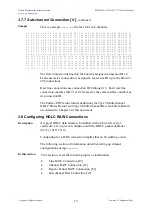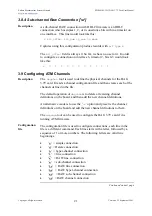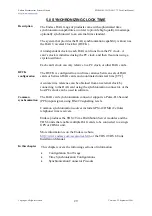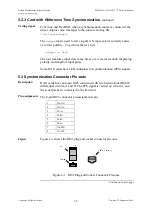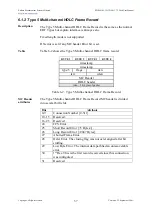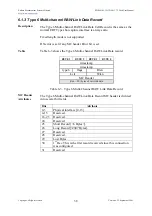
Endace Measurement Systems Limited
http://www.endace.com
EDM01.05-12r1 DAG 3.7T Card User Manual
Copyright, all rights reserved.
30
Version 6. 22 September 2005.
5.1 Configuration Tool Usage
Description
The DUCK is very flexible, and can be used in several ways, with or
without an external time reference source. It can accept synchronization
from several input sources, and can also be made to drive its
synchronization output from one of several sources.
Synchronization settings are controlled by the
dagclock
utility.
Example
dag@endace:~$ dagclock -h
Usage: dagclock [-hv] [-d dag] [option]
-h this
page
-v increase
verbosity
-d DAG device to use
Option:
default
RS422 in, none out
none
None in, none out
rs422in
RS422
input
hostin
Host input (unused)
overin
Internal input (synchronize to
host clock)
auxin
Aux input (unused)
rs422out
Output the rs422 input signal
loop
Output the selected input
hostout
Output from host (unused)
overout
Internal output (master card)
set
Set DAG clock to PC clock
reset
Full clock reset. Load time
from PC, set rs422in, none out
By default, all DAG cards listen for synchronization signals on their RS-
422 port, and do not output any signal to their RS-422 port.
dag@endace:~$ dagclock –d dag0
muxin rs422
muxout
5.2 Time Synchronization Configurations
Description
The DUCK is very flexible, and can be used in several ways, with or
without an external time reference source.
The use includes a single card with no reference, two cards with no
reference, and a card with reference.
In this section
This section covers the following topics of information.
•
Single Card no Reference Time Synchronization
•
Two Cards no Reference Time Synchronization
•
Card with Reference Time Synchronization




